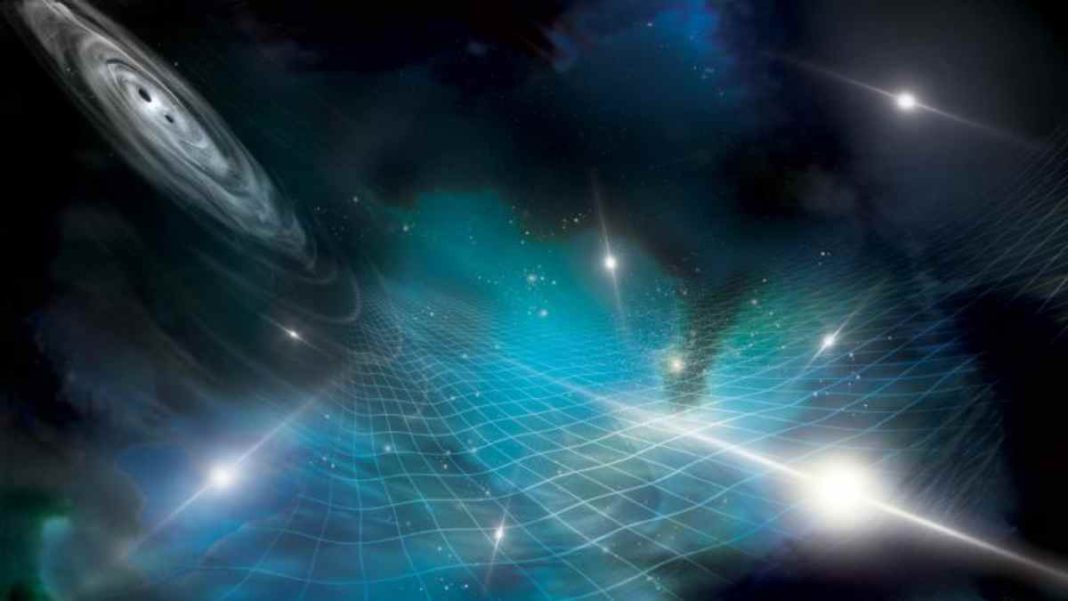UNITED STATES: In a monumental breakthrough, scientists have unveiled evidence of a universal background of gravitational waves, unravelling the mysteries of the fabric of space-time. After meticulously analyzing 15 years of radio data, the North American Nanohertz Observatory for Gravitational Waves (NANOGrav) has successfully detected ripples that permeate the cosmos.
This ground-breaking discovery provides invaluable insights into the creation, propagation, and influence of gravitational waves, offering a deeper understanding of our vast universe.
Unveiling the cosmic symphony
The motion of massive celestial objects, including black holes, generates ripples in the fabric of the universe known as gravitational waves. On June 28, NANOGrav announced the first-ever evidence of a background of long-wavelength gravitational waves that fill the expanse of space-time. These waves are believed to have originated from the intricate dance of supermassive black holes, with masses billions of times greater than our Sun, as they gracefully circled one another before merging.
Comparable to the collective hum of a multitude of voices at a lively party, this gravitational wave background represents a universal symphony yet to be fully understood.
Gaining new insights
The momentous discovery of the background ripples captured by NANOGrav holds immense promise for advancing scientific knowledge. It offers scientists a unique opportunity to unravel the mechanisms behind gravitational wave creation and their behaviour as they traverse the vastness of our universe.
Moreover, this finding provides a gateway to studying the mergers of supermassive black holes, phenomena that can endure for millions of years and significantly shape the evolution of galaxies.
Years of dedication and collaboration
The evidence presented by NANOGrav comes after over 15 years of dedicated efforts by a team of more than 190 scientists from the United States and Canada. This collaboration, supported by the National Science Foundation, boasts the inclusion of prominent researchers from NASA’s Jet Propulsion Laboratory in Southern California, as well as other esteemed NASA centres.
Utilizing ground-based radio telescopes, these experts have meticulously collected high-precision data, diligently sifting through vast amounts of information to uncover the elusive gravitational wave background.
Building on previous milestones
The amazing finding revealed by NANOGrav adds to the ground-breaking gravitational wave detection made by the Laser Interferometer Gravitational Observatory (LIGO) in 2015. However, the gravitational waves detected by NANOGrav have significantly longer wavelengths compared to the earlier findings of LIGO.
The latter primarily focused on waves emitted by black holes approximately 30 times the mass of our Sun. NANOGrav’s findings open up a new dimension of research and expand our understanding of gravitational wave phenomena.
Towards the future
Exciting prospects lie ahead as NASA collaborates with the European Space Agency (ESA) on the Laser Interferometer Space Antenna mission. This future space-based observatory aims to detect gravitational waves within a wavelength range, bridging the gap between those detected by NANOGrav and LIGO.
The joint effort promises to unlock further insights into the profound mysteries of the cosmos, bringing us closer to comprehending the intricate tapestry of space-time.
Also Read: NASA Unveils AI Assistant for Astronauts to Communicate with Spacecraft



